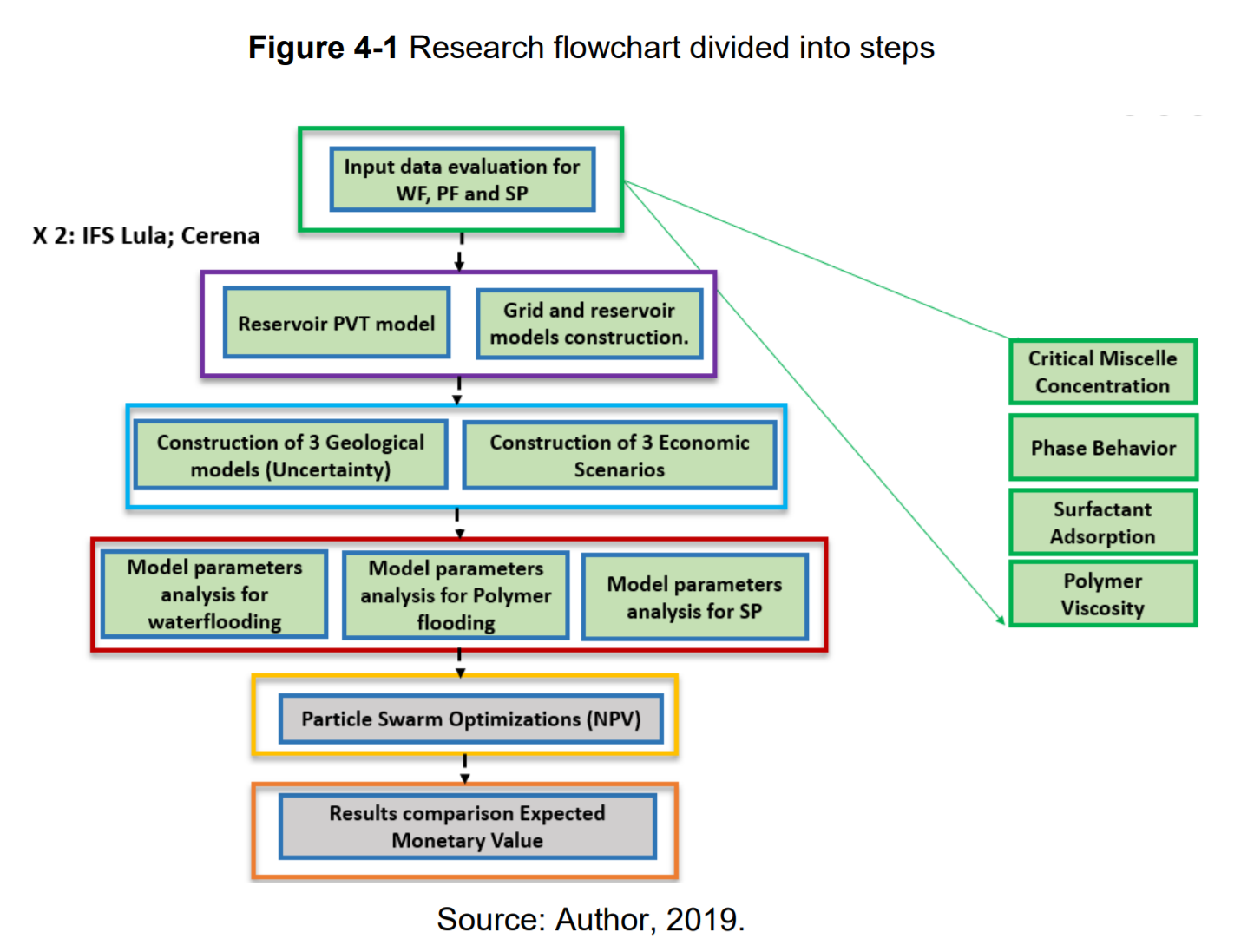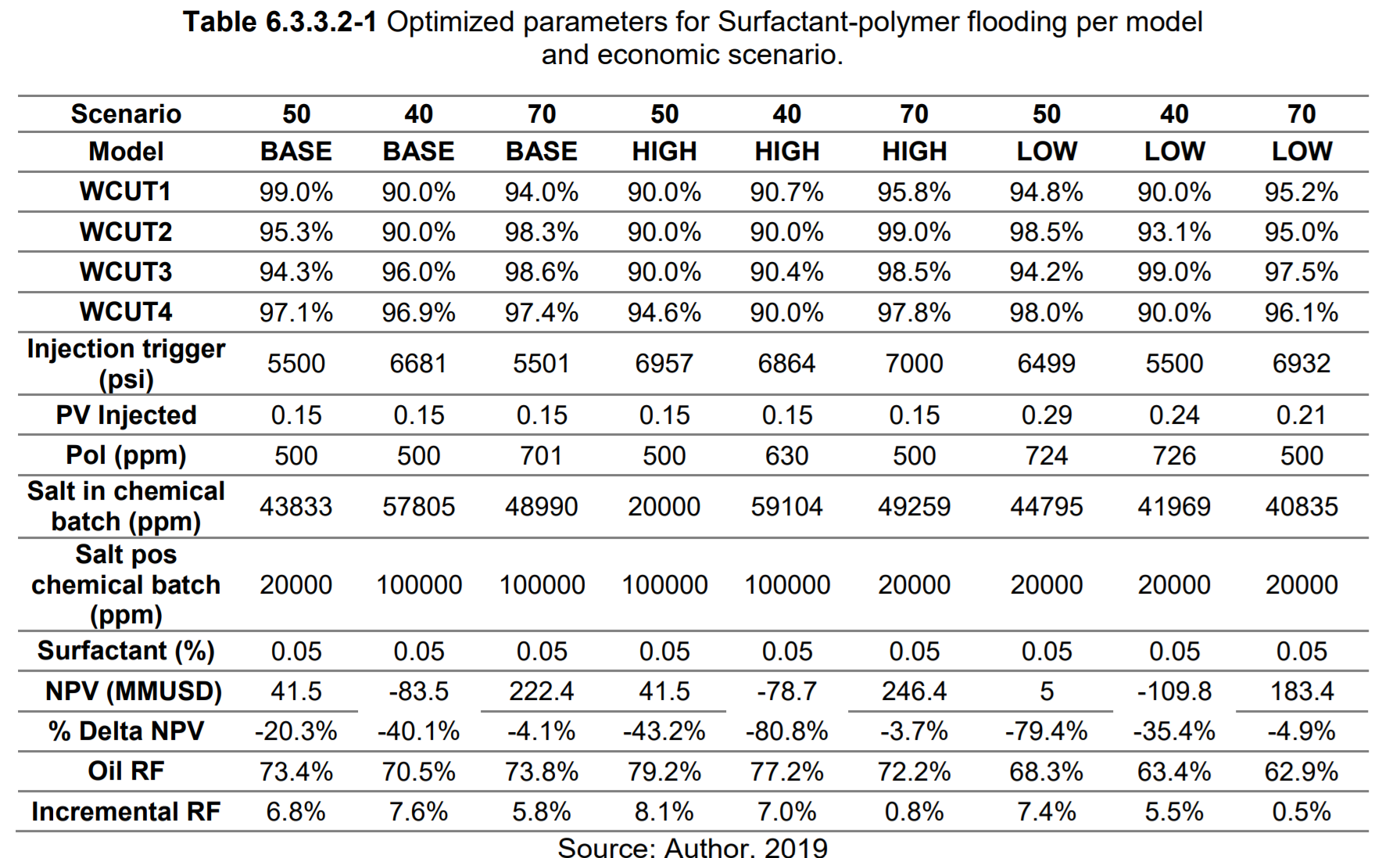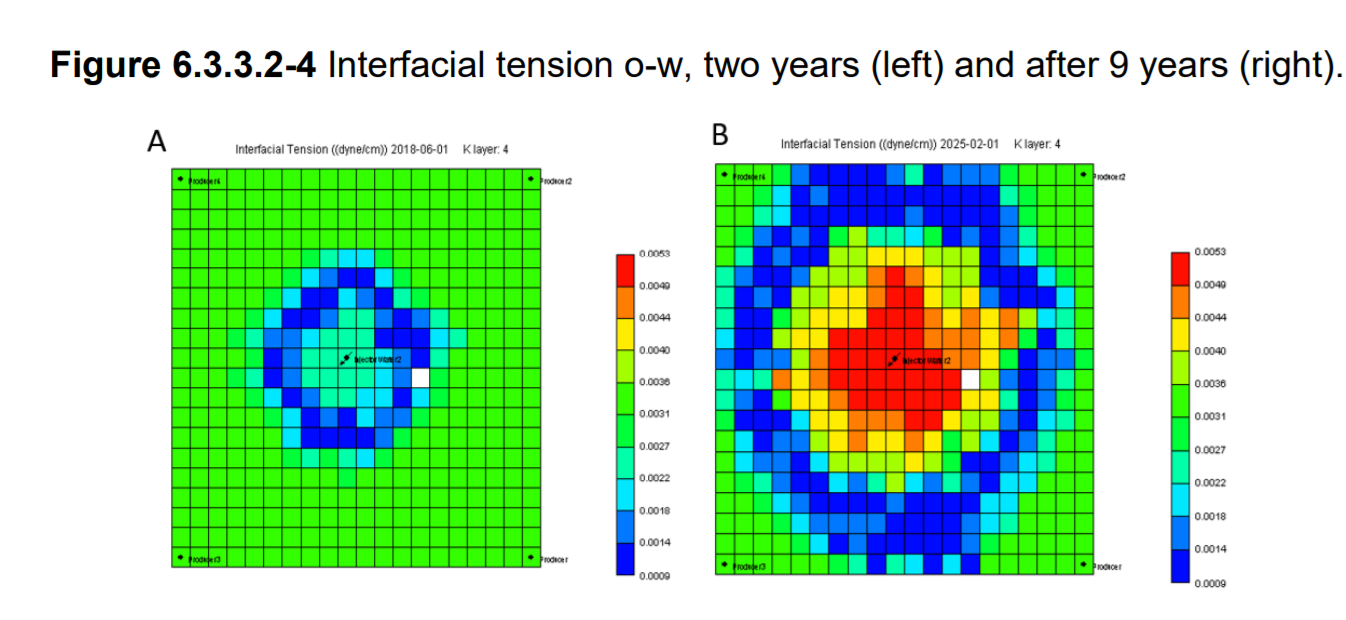Optimization and Comparison between polymer, surfactant-polymer and water flooding recoveries in a pre-salt carbonate reservoir considering uncertainties
Abstract
A successful Chemical Enhanced Oil Recovery (CEOR) program starts with a proper process selection for a given field, followed by a formulation of the batch components and a representative simulation step. Also, lab studies, field data, pilot testing, and economic analyses are required before project implementation. This work discusses the state of the art of the Surfactant – Polymer flood (SP) EOR technique, specifically for carbonate reservoirs, and states a methodology mixing laboratory, literature and reservoir simulation, to assess its applicability under economic and geological uncertainties.
First, it is explained concepts related to the research, such as polymer, surfactant, microemulsion, functionalities of each chemical injected, advantages, and disadvantages. Second, a state of the art is developed about recent SP advances. Third, it is described the laboratory method being used to evaluate some properties of the chemicals injected for the Polymer flooding (PF) and SP flooding. Later, the simulation study step being conducted is explained, which will define the volume recovered and Net Present Value (NVP) obtained for the PF, SP injections and water flooding, in different economic and geological scenarios for two models resembling carbonate Brazilian reservoirs. Finally, it is discussed the results obtained, future research that could be performed, and the respective bibliography. As part of this research, it was verified the Xanthan gum shows adequate results at different concentrations ; that a surfactant specifically selected for a carbonate rock with low Interfacial tension and low adsorption is required ; also that for the Lula based model although the polymer flooding and Surfactant – Polymer simulation brought some benefits, when compared with the waterflooding , on different economic scenarios and geological models, the high cost associated to the chemical handling facilities and volume spent do not make favorable its application in any scenario .
On the contrary for the Cerena, I field model, it was found the SP and Polymer flooding on all cases brought better results when compared with the water injection. Concluding that the performance and success of a CEOR program require finding the correct slug characteristics for the unique conditions of each reservoir. In this research the reservoir with higher production rates made possible the use of Chemical EOR presenting better results than a water injection however in the smaller model they were not economically viable due to the additional associated prices.
Key Words:
Enhanced Oil Recovery, Surfactant – Polymer, Polymer, Carbonate Reservoir, Particle Swarm Optimization, Expected Monetary Value





